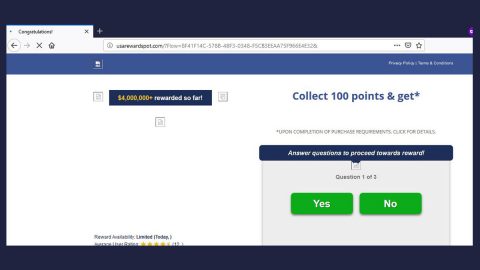 The Sync-eu.exe.bid is a trojan horse that has not yet been included in the MBAM database of viral signatures, but can weaken your system and mess with your PC. It said that anti-virus displays a message about blocking of the threat repeatedly, but the scan does not give a positive result. Trojans are considered to be among the most destructive types of malware or virus out there. Trojans are not only dangerous and aggressive but also very stealthy. You wouldn’t know if there might be a potential intruder hiding in some perfectly legitimate-looking email. Hackers usually use this tactic to spread ransomware and Trojans online. You might not too careful and it infect your PC through opening random email. You might accidentally or unknowingly hit and downloaded a whole bouquet of infections. What’s difficult is, it’s almost impossible to even detect the parasite’s presence on time. And this Trojan infection must be uninstalled immediately. If the virus manages to sneak through in your board, it will eventually get out of control-yes, that means trouble. It also means that sync-eu.exe.bid could cause you some serious, irreversible damage.
The Sync-eu.exe.bid is a trojan horse that has not yet been included in the MBAM database of viral signatures, but can weaken your system and mess with your PC. It said that anti-virus displays a message about blocking of the threat repeatedly, but the scan does not give a positive result. Trojans are considered to be among the most destructive types of malware or virus out there. Trojans are not only dangerous and aggressive but also very stealthy. You wouldn’t know if there might be a potential intruder hiding in some perfectly legitimate-looking email. Hackers usually use this tactic to spread ransomware and Trojans online. You might not too careful and it infect your PC through opening random email. You might accidentally or unknowingly hit and downloaded a whole bouquet of infections. What’s difficult is, it’s almost impossible to even detect the parasite’s presence on time. And this Trojan infection must be uninstalled immediately. If the virus manages to sneak through in your board, it will eventually get out of control-yes, that means trouble. It also means that sync-eu.exe.bid could cause you some serious, irreversible damage.
Given the hype that has been raised around Sync-eu.exe.bid, and since it’s not clearly stated what’s going on and what constitutes the threats, the experts would explain it sooner. Possibly, this is just a glitch in the anti-virus, and that you do not have to worry about it. However, until there is no updates and news, it is safer to assume that your computer has a trojan infection. So, you should limit your activity on the infected computer, especially when it comes to accessing private accounts like the ones related to the management of accounts in social networks, bank accounts and others.
With all the possible dangers that may erupt from negligence or ignorance, do not ever procrastinate right now. You have plenty of reasons to take measures as soon as possible. The sync-eu.exe.bid virus won’t stop harassing you , not until you remove or delete it. It eventually slows down your PC speed. Don’t get surprised when your device starts to freeze and/or crash on a regular basis. That is one of the many signs of the Trojan infection, so it it best to remove this immediately before a disaster could happen.
How to Uninstall Sync-eu.exe.bid Manually
Uninstalling Sync-eu.exe.bid on Windows 10 or Windows 8
Which one are you using, Windows 10 or 8? You can follow the steps below to remove Sync-eu.exe.bid from your PC’s system.
Step 1) Point on the Start button and right-click on it or the Windows icon at the bottom left-hand corner of the screen, then hit Control Panel from the menu that shows up.

Step 2) Click Uninstall a program under Programs from the menu.

Step 3) Scroll down the list until you see Sync-eu.exe.bid and click the Uninstall button beside the entry to remove it once you found it.

Uninstalling Sync-eu.exe.bid on Windows Vista, Windows 7, or Windows XP
With an older version of Windows, if you are using it, then you’re not immune from Sync-eu.exe.bid issues. Follow the steps below to remove the malware.
Step 1) Left-click the Windows icon at the bottom left corner of your screen, or you can also point and left-click the Start Button, then click Control Panel

Step 2) Under Programs, click Uninstall a program.

Step 3) Click Programs and Features. Look for Sync-eu.exe.bid from the menu that shows up. Scan through the list then remove it once you see it.

There’s still a need to remove it from each individual browser you use even after you’ve removed Sync-eu.exe.bid from your PC’s programs menu. Follow the steps below to do that.
Internet Explorer
Step 1) Open IE browser and tap all together the Alt+T keys on your keyboard at the same time
Step 2) Hit Manage Add-ons, then click Toolbars and Extensions
Step 3) Look for Sync-eu.exe.bid on your list of extensions, then eliminate it
Google Chrome
Step 1) Open Chrome browser
Step 2) Tap the Alt+F keys together
Step 3) Press Tools, then click Extensions
Step 4) Look for Sync-eu.exe.bid and click the trash can icon to delete it from Chrome
Mozilla Firefox
Step 1) Open Mozilla Firefox
Step 2) Tap the Ctrl+Shift+A keys all together so you can open the Settings menu, then click Extensions
Step 3) Look for Sync-eu.exe.bid, then delete it
If there’s no sign of Sync-eu.exe.bid in any of the above browsers, then that’s fine since the software is mostly desktop-based PC optimization software that has minimal effect on the browsers. But definitely, you should make sure that your PC is completely malware free.
Removing Sync-eu.exe.bid with AdwCleaner
We recommend the AdwCleaner virus removal programs if you need it since we’ve used and tested it for a while now. In under a minute, the Trojan is ousted from your PC. Follow the steps below for any version of Windows.
Step 1) let’s start by downloading the AdwCleaner from the official website:Click on the link AdwCleaner Download (this will open a new browser window and start the download process)

Step 2) Double-click on the downloaded file which you can find in your desktop or downloads folder.

Step 3) Open the software manually if it doesn’t open automatically, then Scan it.

Step 4) For the scan to be completed, you have to wait for 3 to 5 minutes.

Step 5) After scanning completely, AdwCleaner will display a list of files that are infected which includes any files linked to Sync-eu.exe.bid. Save and close your documents, then allow the AdwCleaner reboot your PC for finalization.
As mentioned, this program makes modifications in your system registry and it likely a browser hijakcer. As it hijacks your browser, it collects private data such as IP addresses, browsing history, usernames, passwords, and email addresses. However, the Trojan horse could dangerously get to some much more private and sensitive information like your bank account. This nasty Trojan pest may involve you in some financial fraud or identity theft, before you even know it. Hackers might even get remote control over your computer and you’ll have no power over it . Now, if that doesn’t sound too good to you, delete this pesky Trojan right now, and use a legitimate, trustworthy, safe and quality malware or virus removal programs.











